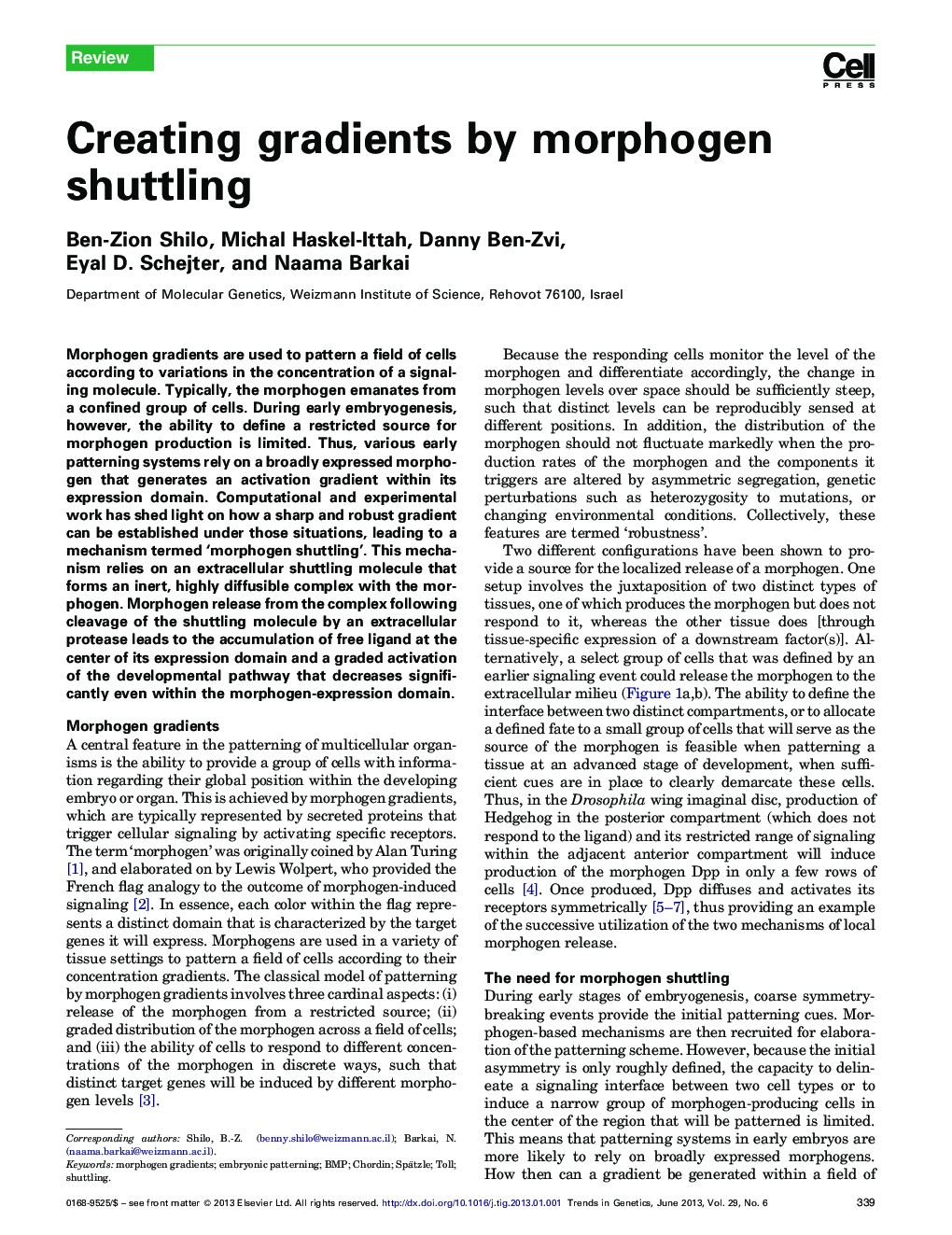| Article ID | Journal | Published Year | Pages | File Type |
|---|---|---|---|---|
| 2824974 | Trends in Genetics | 2013 | 9 Pages |
Morphogen gradients are used to pattern a field of cells according to variations in the concentration of a signaling molecule. Typically, the morphogen emanates from a confined group of cells. During early embryogenesis, however, the ability to define a restricted source for morphogen production is limited. Thus, various early patterning systems rely on a broadly expressed morphogen that generates an activation gradient within its expression domain. Computational and experimental work has shed light on how a sharp and robust gradient can be established under those situations, leading to a mechanism termed ‘morphogen shuttling’. This mechanism relies on an extracellular shuttling molecule that forms an inert, highly diffusible complex with the morphogen. Morphogen release from the complex following cleavage of the shuttling molecule by an extracellular protease leads to the accumulation of free ligand at the center of its expression domain and a graded activation of the developmental pathway that decreases significantly even within the morphogen-expression domain.
